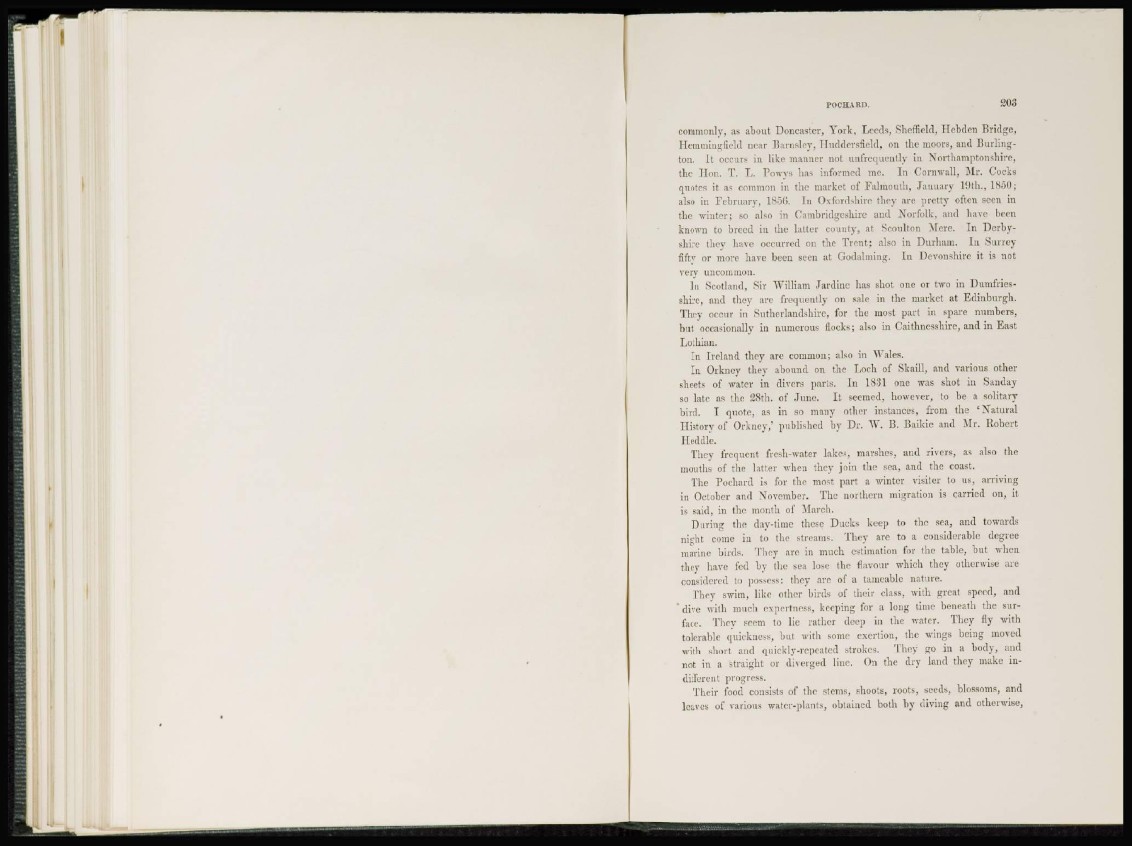
r o c i i A i t n . 80S
commonly, as about Doncaster, York, Leeds, Sheffield, TTebden Bridge,
Hcmmingfield near Barnsley, Iluddersfield, on the moors, and Burlington.
It occurs in like manner not unfrequently in Northamptonshire,
the Hon. T. L. Powys has informed me. In Cornwall, Mr. Cocks
quotes it as common in the market of Falmouth, January 19th., 1850;
also in February, 1856. In Oxfordshire they are pretty often seen in
the winter; so also in Cambridgeshire and Norfolk, and have been
known to breed in the latter county, at Seoul ton Mere. In Derbyshire
they have occurred on the Trent; also in Durham. In Surrey
fifty or more have been seen at Godahning. In Devonshire it is not
very uncommon.
In Scotland, Sir William Jar dine has shot one or two in Dumfriesshire,
and they arc frequently on sale in the market at Edinburgh.
They occur in Sutherlandshire, for the most part in spare numbers,
but occasionally in numerous flocks; also in Caithnesshirc, and in East
Lothian.
In Ireland they are common; also in Wales.
I n Orkney they abound on the Loch of Skaill, and various other
sheets of water in divers parts. In 1831 one was shot in Sanday
so late as the 28th. of June. It seemed, however, to be a solitary
bird. I quote, as in so many other instances, from the ' Natural
History of Orkney,' published by Dr. W. B. Baikie and Mr. Robert
Heddle.
They frequent fresh-water lakes, marshes, and rivers, as also the
mouths of the latter when they join the sea, and the coast.
The Pochard is for the most part a winter visiter to us, arriving
in October and November. The northern migration is carried on, it
is said, in the month of March.
During the day-time these Ducks keep to the sea, and towards
night come in to tin; streams. They are to a considerable degree
marine birds. They are in much estimation for the table, but when
they have fed by the sea lose the flavour which they otherwise are
considered to possess: tliev arc of a tameable nature.
They swim, like other birds of their class, with great speed, and
dive with much cxpertnoss, keeping for a long time beneath the surface.
They seem to lie rather deep in the water. They fly with
tolerable quickness, but with some exertion, the wings being moved
with short and quickly-repeated strokes. They go in a body, and
not in a straight or diverged line. On the dry land they make indifferent
progress.
Their food consists of the stems, shoots, roots, seeds, blossoms, and
leaves of various water-plants, obtained both by diving and otherwise,